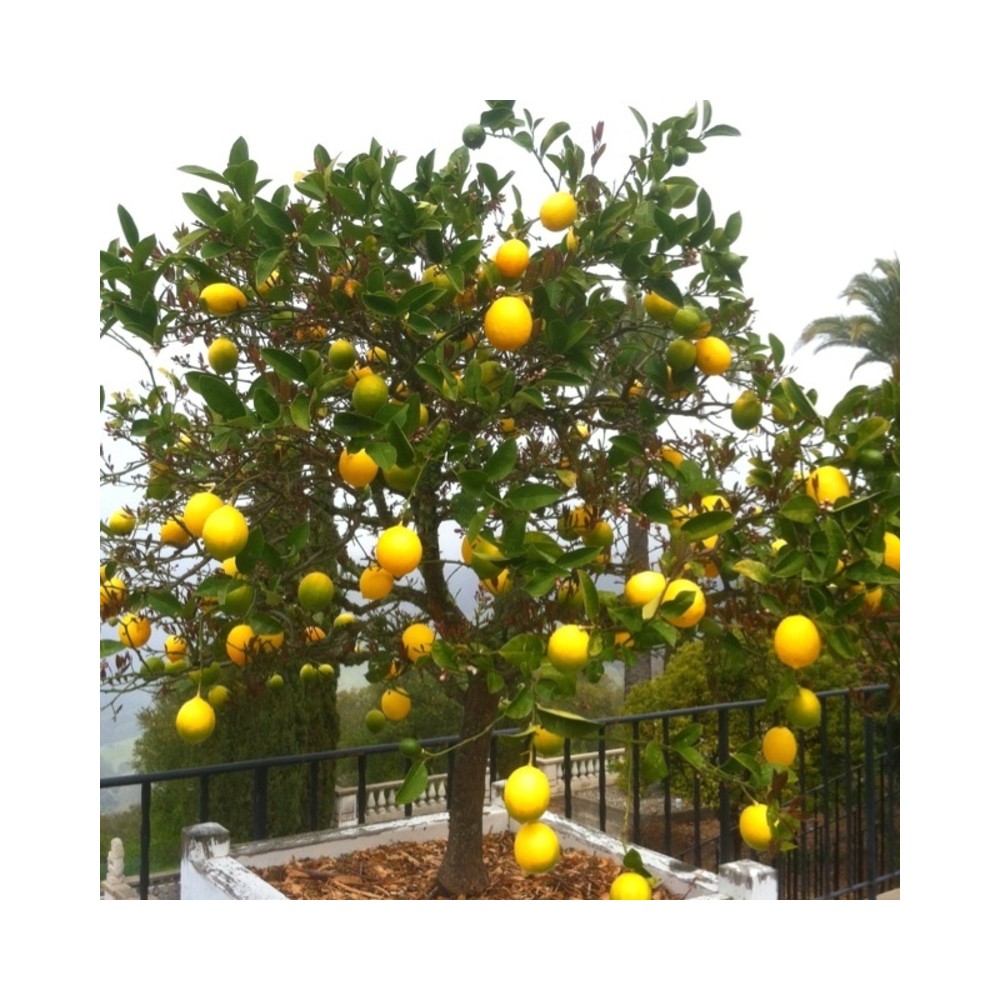



Lemon trees grow up to 7 feet in height, sporting lots of thorns and pale green foliage. While the tree produces fruit year-round, most trees feature fragrant white blossoms in late summer or fall followed by fruits that appear in August through May. Mature fruits turn a orangish-yellow color when ripe, featuring pale yellow flesh with minimal seeds.

Security policy visit http://nurserynature.com/content/10-security-policy

Shipping & Delivery Policy visit http://nurserynature.com/content/1-delivery

Cancellation & Refund Policy visit http://nurserynature.com/content/6-aeu-legal-revocation-terms
Lemon trees grow up to 7 feet in height, sporting lots of thorns and pale green foliage. While the tree produces fruit year-round, most trees feature fragrant white blossoms in late summer or fall followed by fruits that appear in August through May. Mature fruits turn a orangish-yellow color when ripe, featuring pale yellow flesh with minimal seeds
Lemon Planting & Care
Planting
Since lime trees cannot survive freezing temperatures, they need to be grown in USDA hardiness zones 9 to 10. The trees grow best when planted on the south side of buildings, where they receive more protection from cold spells. The trees prefer well-drained soils. Newly planted trees require water every few days. From then on, regular watering the tree every seven to 10 days helps establish and maintain the tree.
Sweet limes trees do not require cross-pollination with another lime tree to produce fruit. But for greater fruit retention and larger fruits, commercial orchards plant the sweet lime trees near sweet orange or grapefruit trees to improve pollination.
Sweet lime trees also grow well in containers as long as temperatures reach 50 degrees Fahrenheit or warmer. When temperatures fall, containers make it easy to protect the trees from frost; simply bring the container inside. Trees in containers need daily watering; on hot, dry days, the plants may require multiple daily waterings.
People in the Middle East and India pierce the lime and suck the mild-flavored juice out of the fruit. The fruit also gets cooked and preserved for use in a variety of dishes. In India, sweet limes get used for their cooling effect on fevers or jaundice.
A major pest, the Asian citrus leafminer, causes problems for lime trees. This insect arrived in Florida in 1993. The moths form silvery trails in new leaves of the sweet lime tree, causing the leaves to curl up and turn gray before they crumble. While the leaves look ugly, leafminer causes little damage on mature sweet lime trees. On trees less than 4 years old, foliar sprays help reduce the chance of stunted growth.